Phenomena analyzed: Lightning
From the mythological Prometheus until the middle of the 18th century, the phenomenon of lightning remained an unsolved riddle. In 1749 Benjamin Franklin detailed in his diary the resemblance between an electric spark and lightning: both emit light of the same color, and both have a winding trajectory and rapid motion. Both pass through metals, cause noise, break objects they encounter, kill animals or humans, and ignite flammable material.
“Electricity is not only a great microcosm for demonstrating larger Enlightenment movements, but it also was the central scientific advancement of the period.“
Through Benjiamin Franklin’s lightning rod it was possible to demonstrate that man was beginning to take control over nature, or at least over what once was termed “God’s wrath“
The usage of electricity has been marked by historians as the second industrial revolution, although the energy derived from electricity has been known since ancient times. Franklin is considered to be the man that harnessed electricity to the industrial revolution. Since the experiments Franklin conducted in the 18th century, dependence on electricity has only increased. The great breakthrough in electricity occurred in the early 19th century when the British scientist Michael Faraday discovered the basic principles of electricity generation.
As of today, lightning are still seen in a intimidating way: powerful and scary at the same time. Humans avoid them and look for protection from them.
In architecture they are considered only as a destructive nature element, due to the immense power discharged when any object is hitten.
The aim of this research is to understand this natural phenomena, looking into a possible way to exploit their potential.
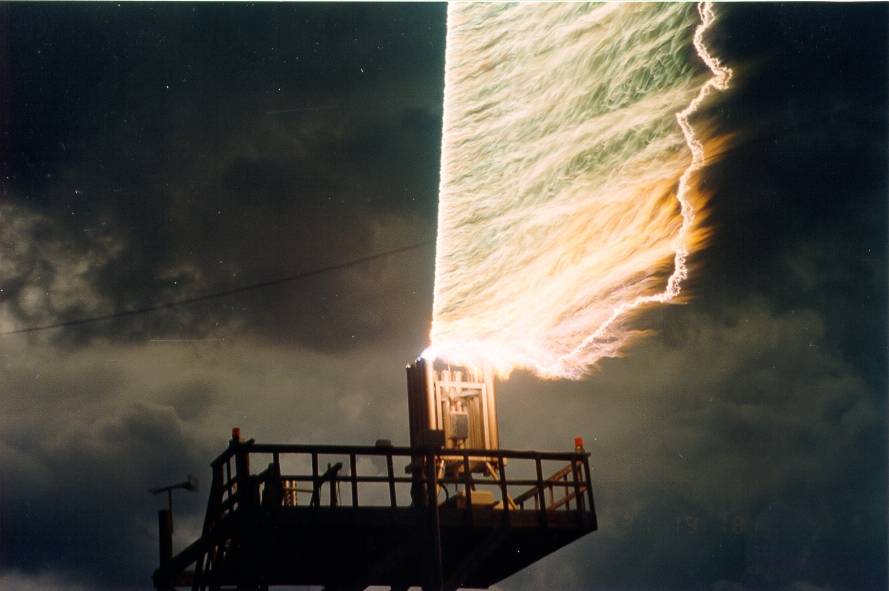
MANIFESTO
A lightning-based monolithic tower structure in a longstandly steadily state of construction due to the irrational and probabilistic nature of the phenomena which generates it.
The design take advantage of the destructive energy by incorporating a passive material – sand, which will evolve with time, becoming the foundation of the constructive principle that leads the structure to change and evolve.
The proliferation of the single one engender a housing development located within a cluster in the rural area of Mallorca, specifically atop the highest ridges in Pollenca Bay.
By integrating nature’s lightning into architecture, the project harnesses its very specific parameters and rules in order to profit from the metamorphosis of the material.
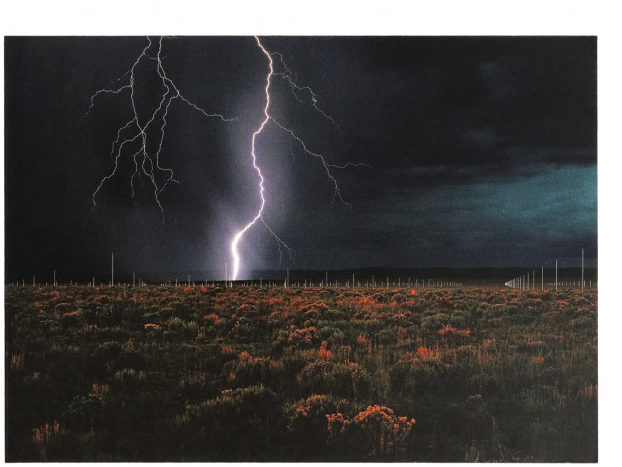
New Mexico – Land Art // ongoing
In which other ways lightning has been seen or displayed till now?
The answer is “experience“: one of the most famous lightning experiences is “the lightning Field” bt Walter de Maria, comprised of 400 polished stainless-steel poles installed in a grid array measuring one mile by one kilometer.
The Project looks at architecture from a very peculiar and pioneering point of view: by making use of the destructive energy to achive a constructive system.
1 Phase: DEVICE
Staging Discharge of Electric Current:
Generation of high-voltage pulse from a low-voltage DC supply in a closed environment stimulated by a negative feedback triggered by the changes in the humidity of the enclosed area
//Scientific Report
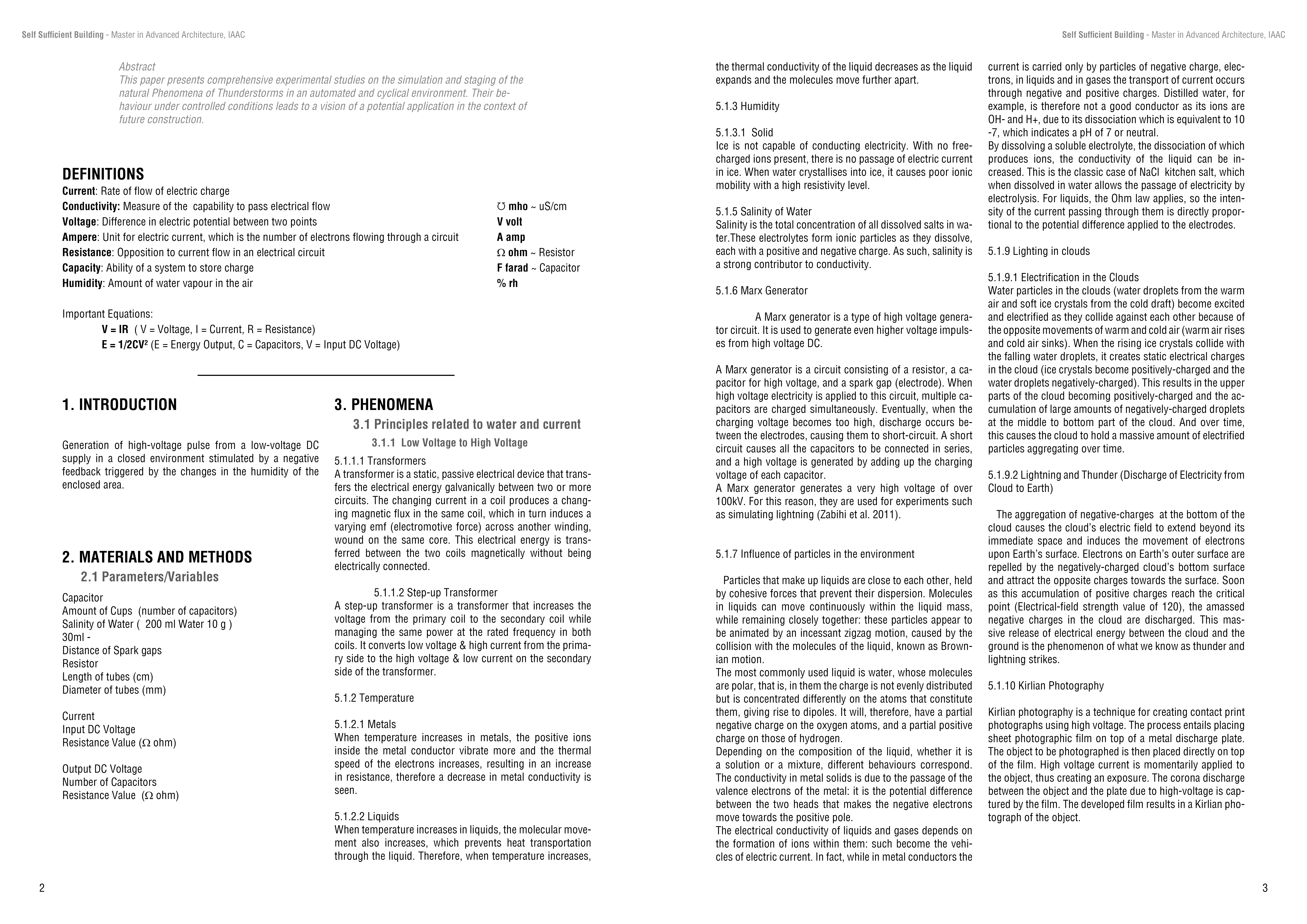

// Bibliography
Uman, M.A., and Krider, E.P. (1989) Natural and artificially initiated lightning. Science, 246, 457–464
Saikia, B.J., Parthasarathy, G., Sarmah, N.C., and Baruah, G.D. (2008) Fouriertransform infrared spectroscopic characterization of naturally occurring glassy fulgurites. Bulletin of Materials Science, 31(2), 155–158
Fiol, Ll.A. & Fornós, Joan & Gelabert, Bernadí & Guijarro, Jose. (2005). Dust rains in Mallorca (Western Mediterranean): Their occurrence and role in some recent geological processes. CATENA. 63. 64-84. 10.1016/j.catena.2005.06.012
Martin Crespo, T., Lozano Fernandez, R.P., and Gonzalez Laguna, R. (2009) The fulgurite of Torre de Moncorvo (Portugal): description and analysis of the glass. European Journal of Mineralogy, 21(4), 783–794.
Elmi, Chiara & Chen, Jiangzhi & Goldsby, David & Gieré, Reto. (2017). Mineralogical and compositional features of rock fulgurites: A record of lightning effects on granite. American Mineralogist. 102. 1470-1481. 10.2138/am-2017-5971.
Szedenik, N. (2001). Rolling sphere – Method or theory?. Journal of Electrostatics – J ELECTROSTAT. 51. 345-350. 10.1016/S0304-3886(01)00108-5.
DRAWING
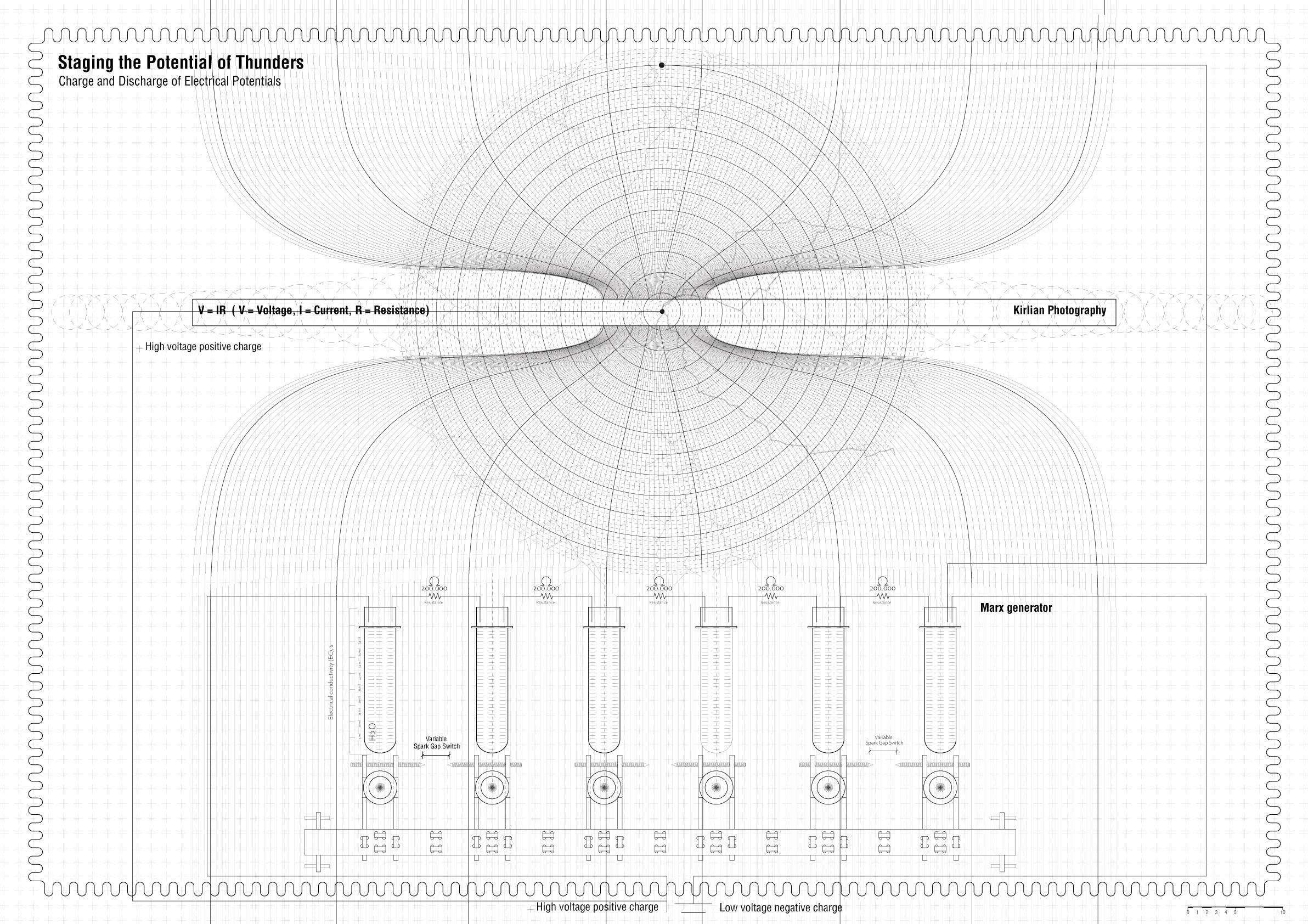
Results
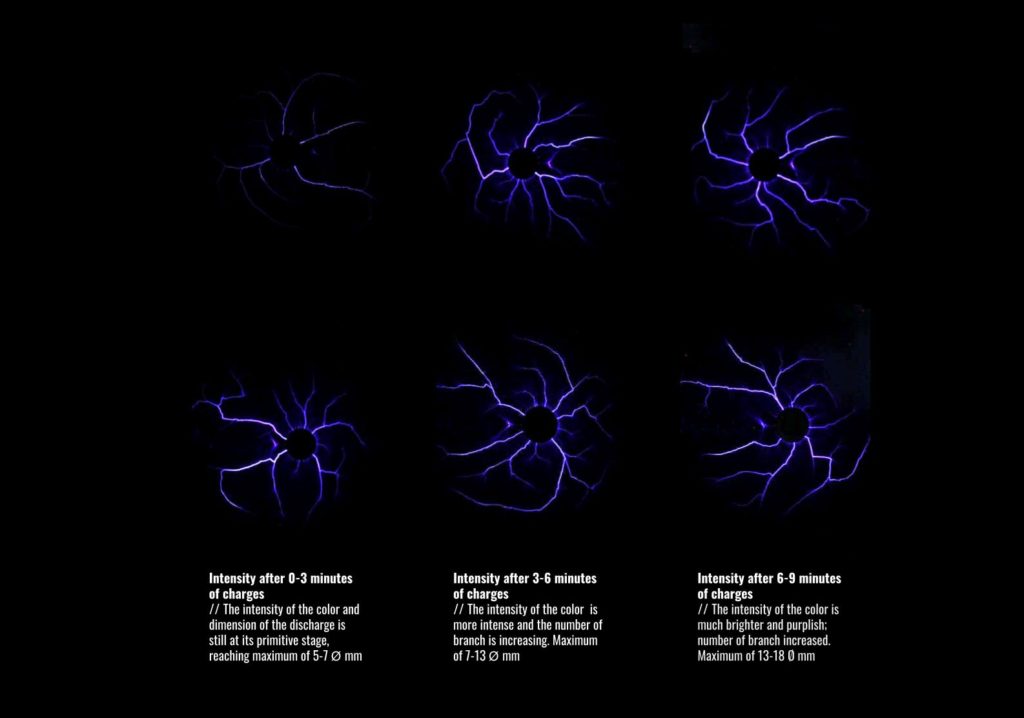
STAGE
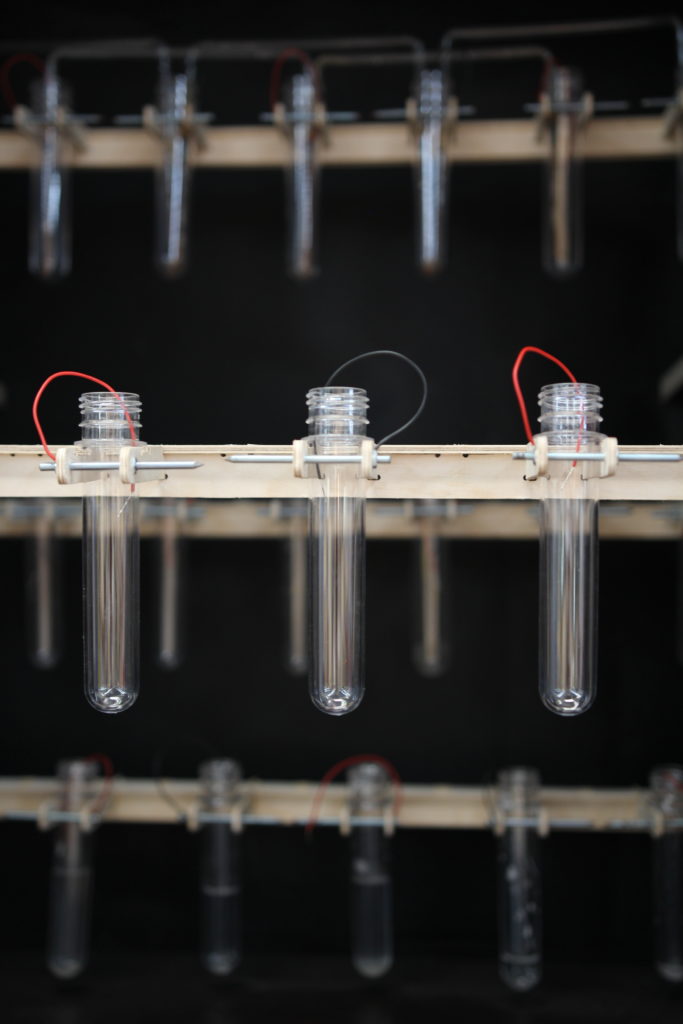
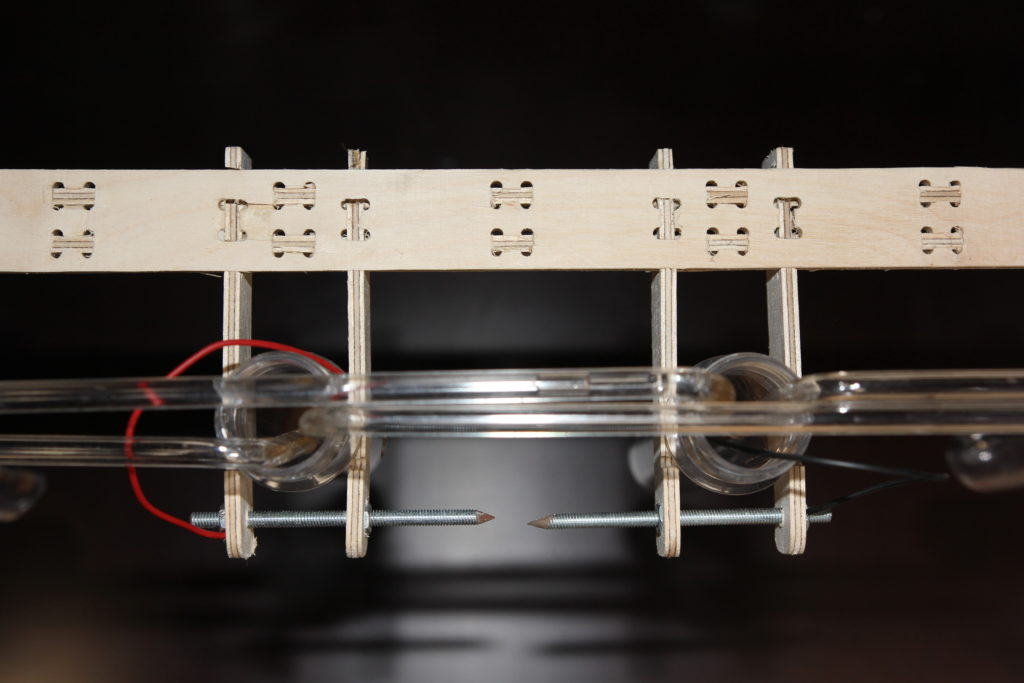
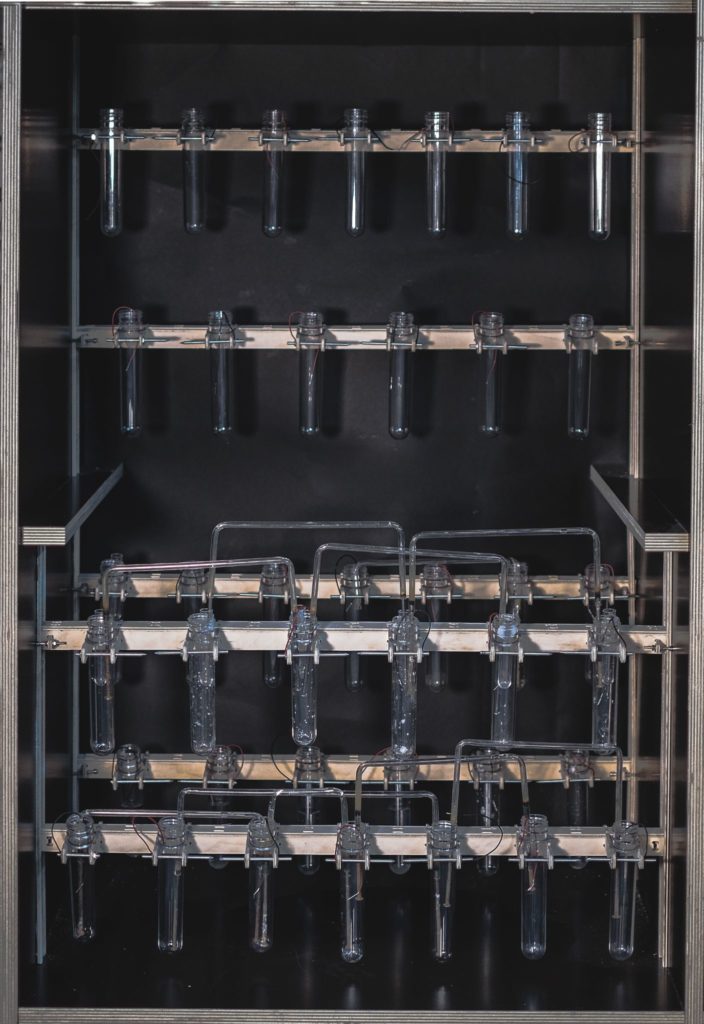
02 PHASE: SMALLEST ARCHITECTURE
A concept of great importance is to understand how to integrate lightning withing architecture: as observed previously, this phenomena is mainly know for its visual quality, but there’s also a very interesting tangible quality that needs to be further explored, and it’s called “fulgurite“.

Fulgurites, a phenomenon commonly referred to as “fossilized lightning”, gets formed when electricity discharges into the ground, formations which comprise masses of vitrified organic debris.
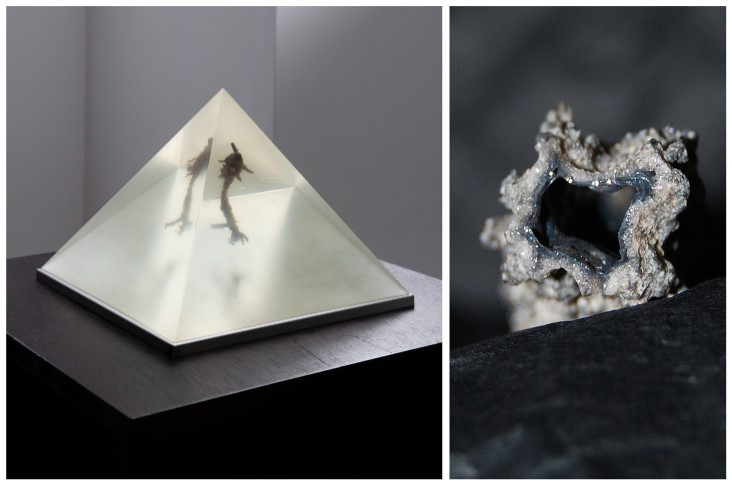
Right: Section of a Fulgurite formation
Our research gives answers on how will lightning be part of the building process and change the building over the time.
What is the the Metamorphosis of building and its state of materialisation enhancing?
As part of this life-long activity of growing, it it important to understand the timeline of the architecture: setting up the building in its initial appearance and creating the optimal conditions the process of solidifying will take its own time.
The density of the Fulgurite network will expand by every Lightning strike.
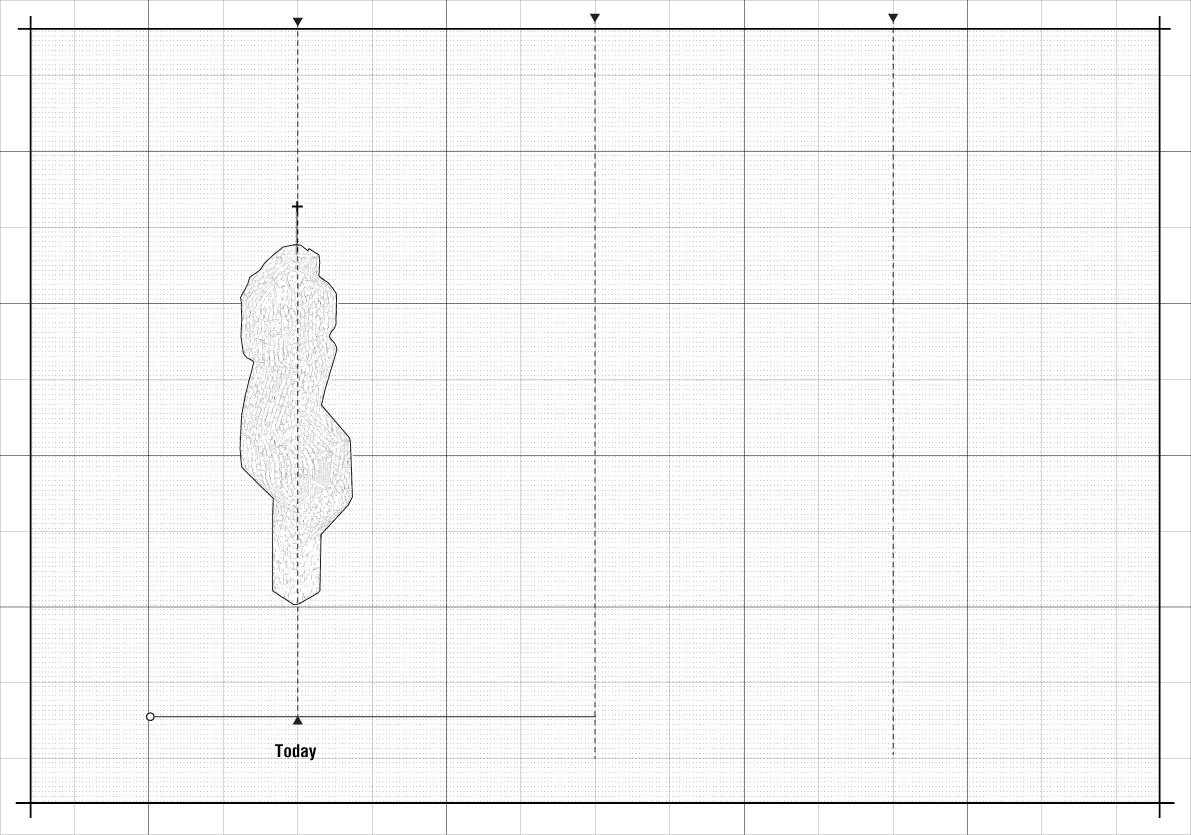
By controlling the the shape of the conductive skin of the building as well as the distribution of sandbags the path of the high voltages can be anticipated.
Through the controlled positioning of the sandbags, fractal growth can be manipulated in 3D space. Nonetheless the solidification process is determined by the frequency and the potential of the lighting exposure.

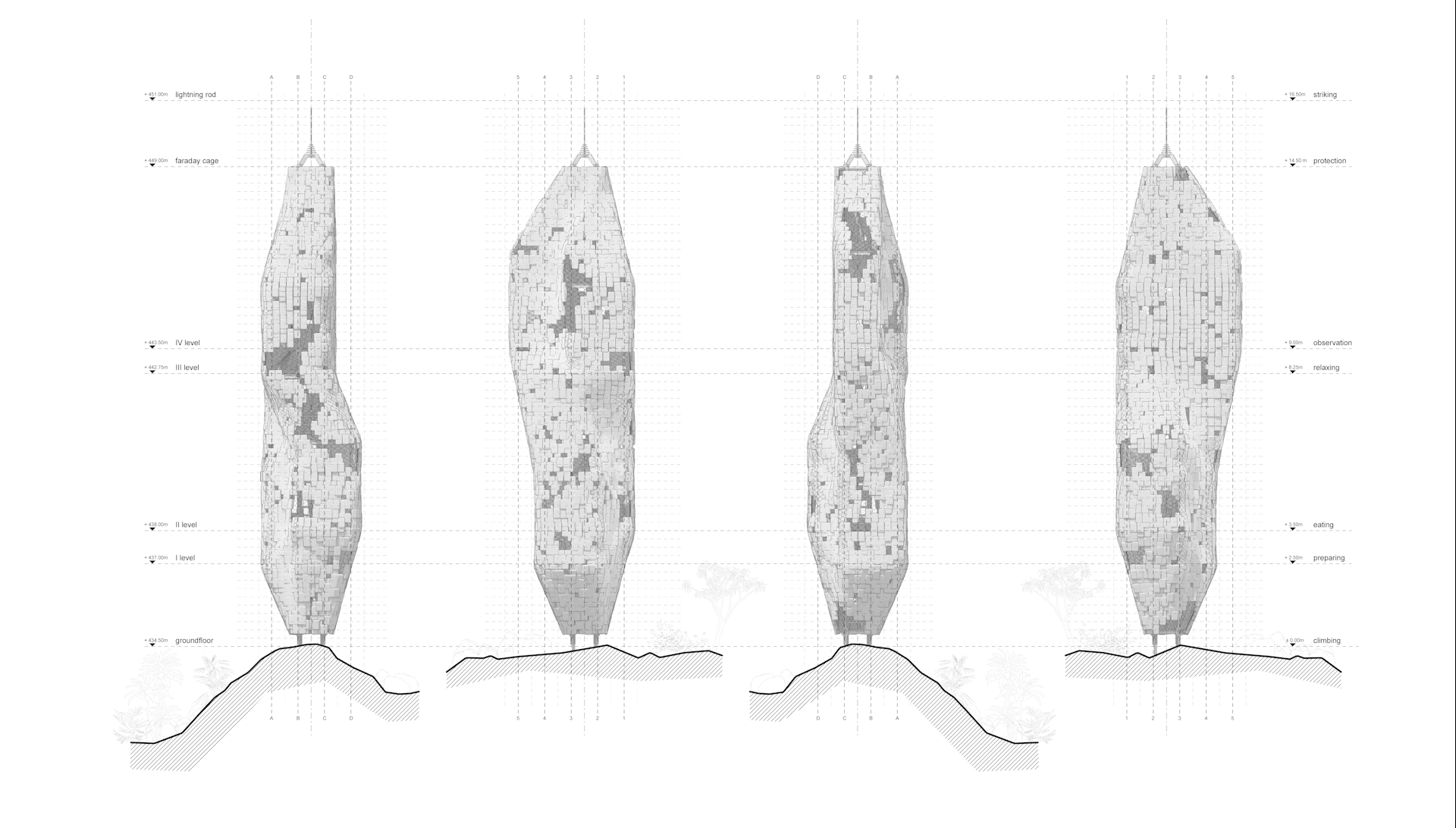
Lightning-based Facade
The process of fractal growth by the solidification of sand changes the atmosphere and the relation of the enclosured spaces to their specific environment.
For different functions of habitation the density variations of the initial bag volume and the over time emerging network of fulgurites will change and adapt their performance. Natural exposure and shading are just one example how the performing facade will contribute to create and modify these architectural spaces over time.

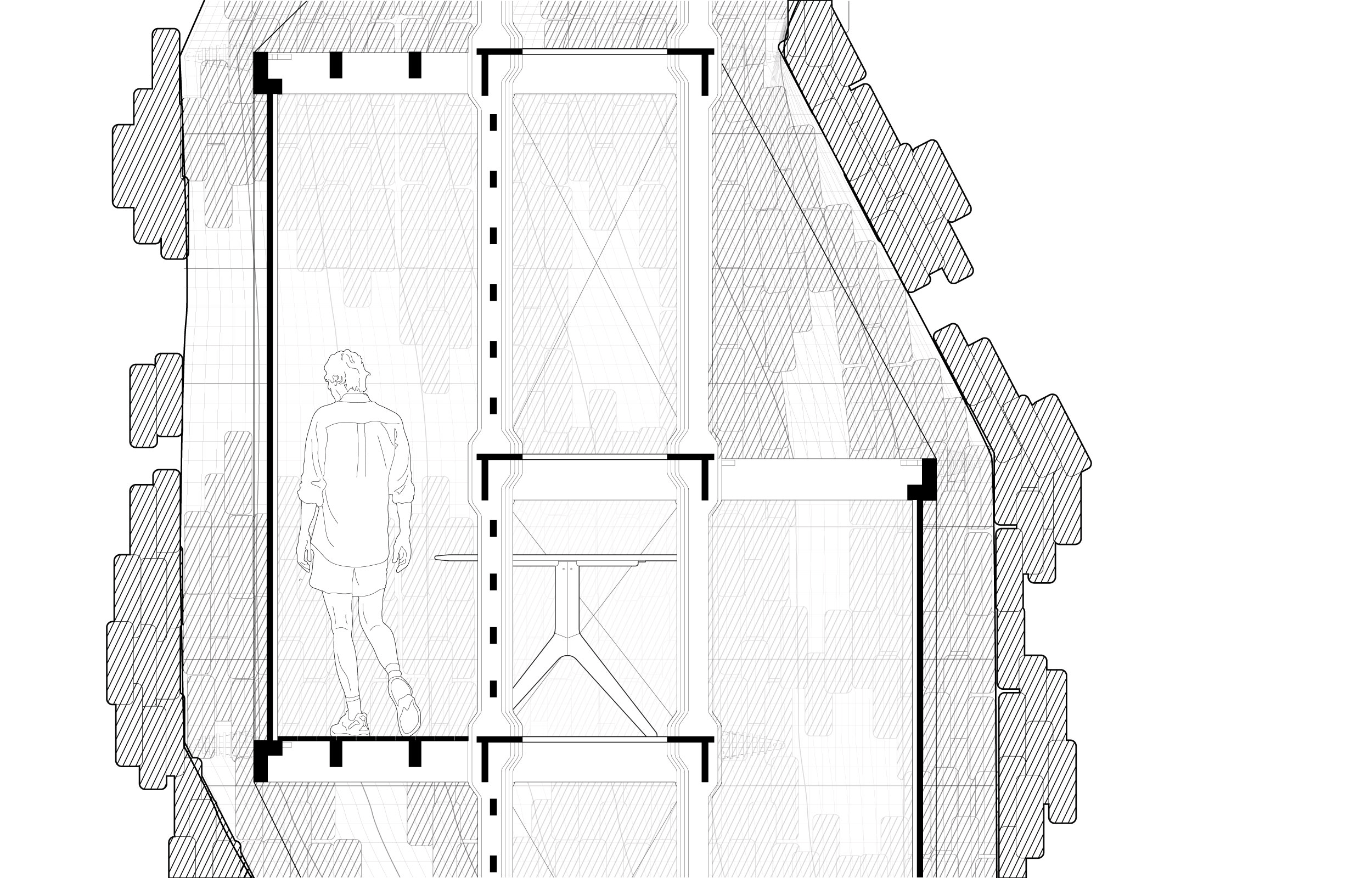
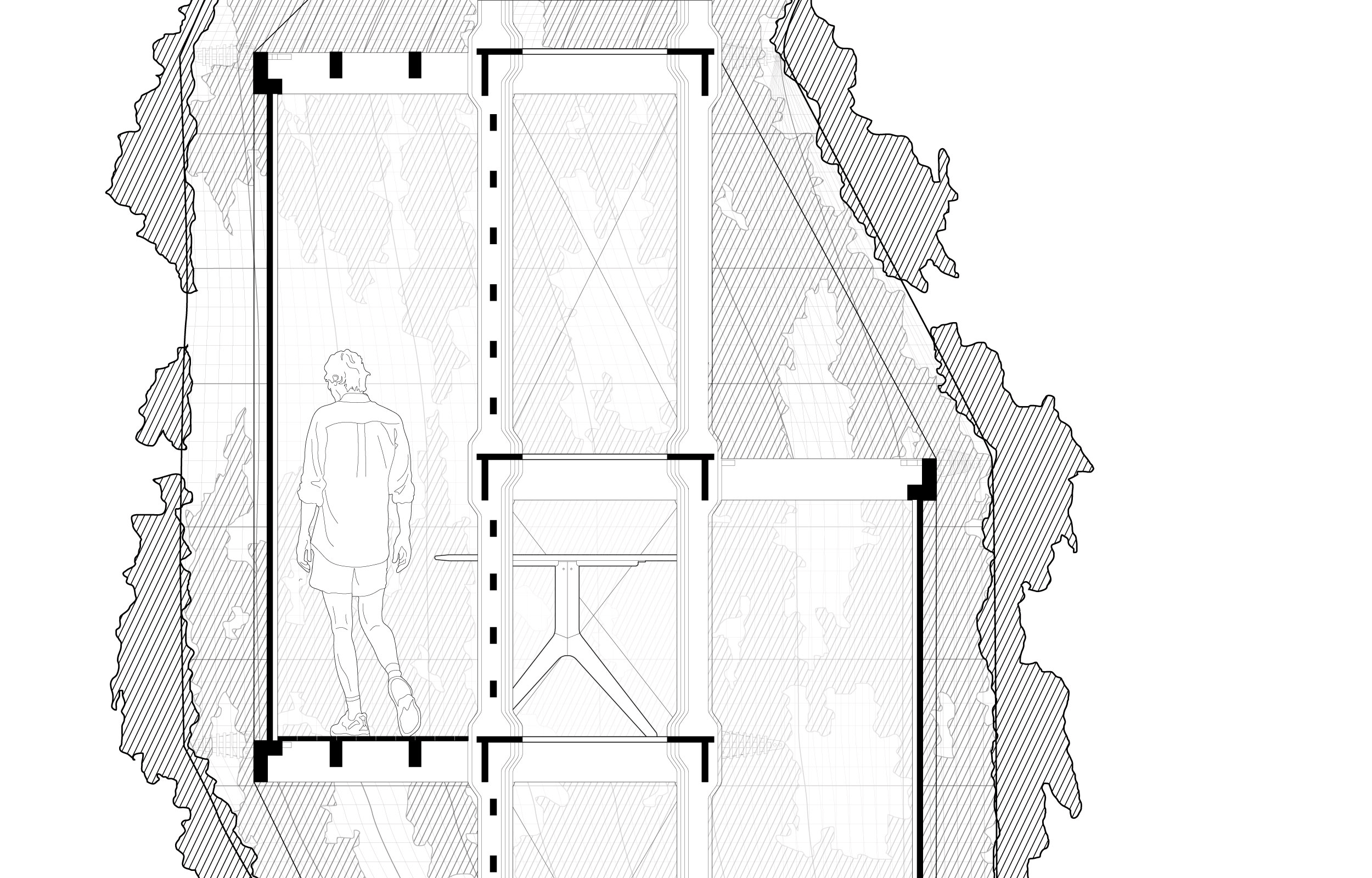
Visualization
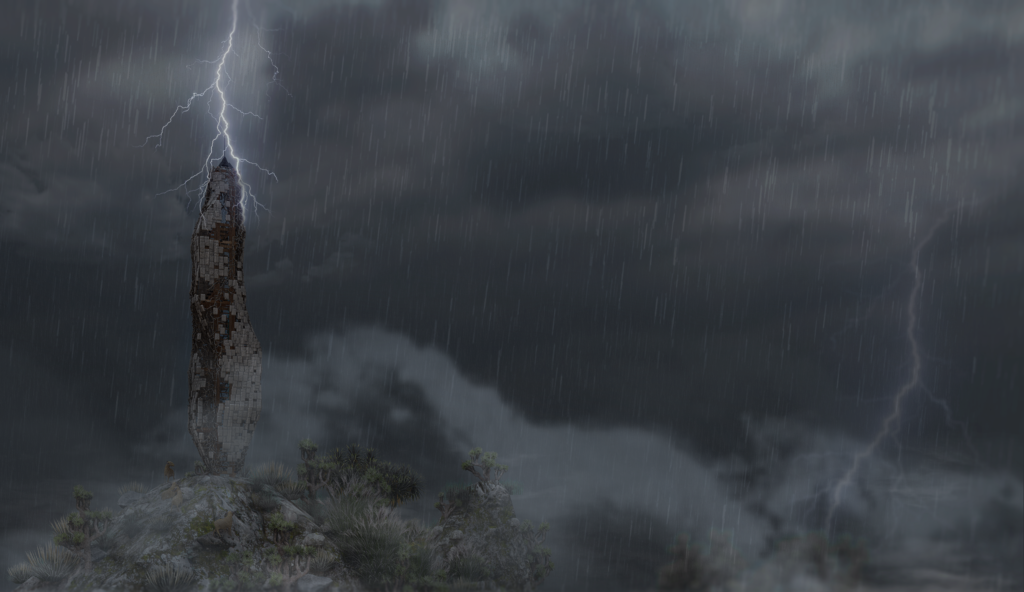


03 PHASE: SELF SUFFICIENT BUILDING
Because of the peculiarity of the phenomena, some parameters are crucial for the lightning to happen: in this case we analized the elevation, where do storms usually happen, and the observed density of lightning discharges. By comparing these collected data the location which happen to be the ideal one is located in Mallorca, close to Pollenca Bay in the very north of the island.

The ridge of the mountain formation here reaches up to about 400 meters. Lightning discharges with different density based on the heigh: in this map it is shown by the height of the crosses lines the density of lightning per km2 in the highest and lowest points of the ridge.
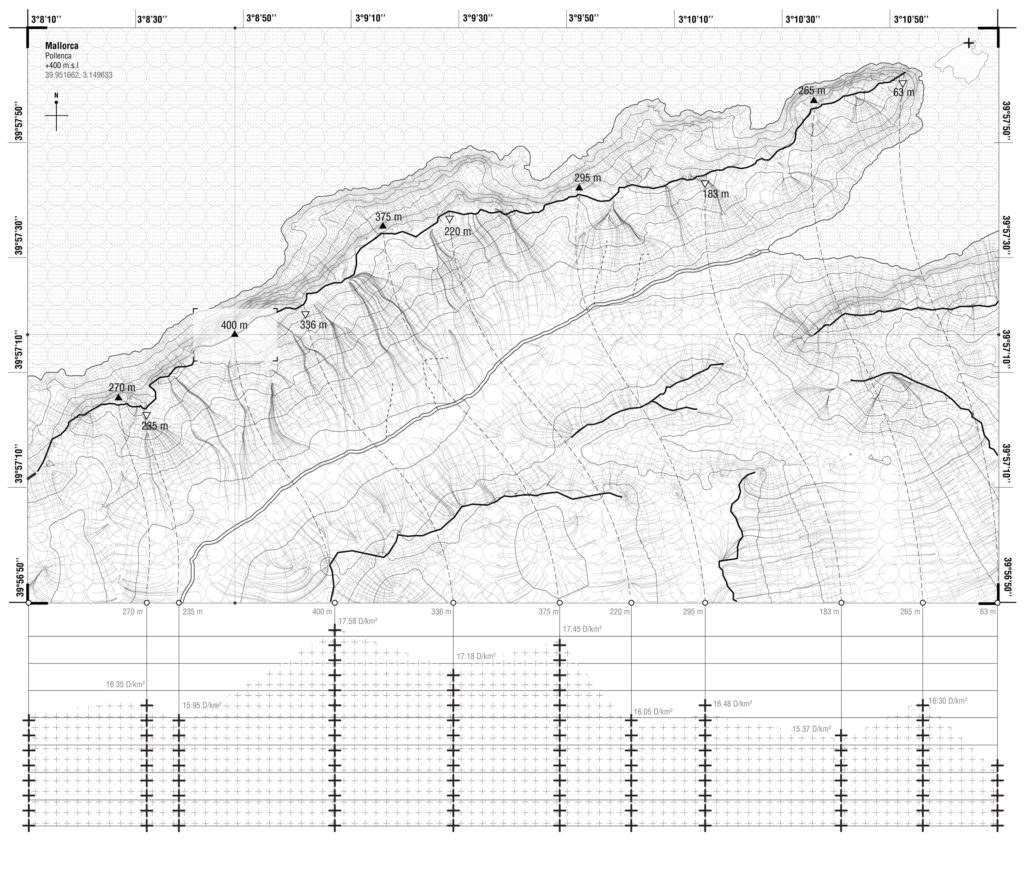
PROLIFERATION
Regarding the strategy of proliferation many different parameters has been taken into account: on the same path 7 hypothesis has been made, in which the heigh and the total walkable length are the most important datas. Because of this reason, the linear and synuoidal option happier to be the most ideal one. The selected one is the dynusoidal, because it combines the highest points, shortest path and allows a certain degree of variation in the clustering.

Zomming in in the masterplan, the distribution of the buildings vary based on the profile of the ridge. Different clusters and envelopes are proposed, depending on the height itself: As it can be observed in this section, the will is to provide every cluster with the same possibility of being hitten by the lightning: because of this reason the height of the rod of all the clusters are equal, as it was observed in the land art example of the lightning field presented at the very beginning.
The logic of every cluster is here disclosed: The main cores contain stairs and elevator, and gives rigidity to the whole enclosure. The slabs and bridges are attached onto them.
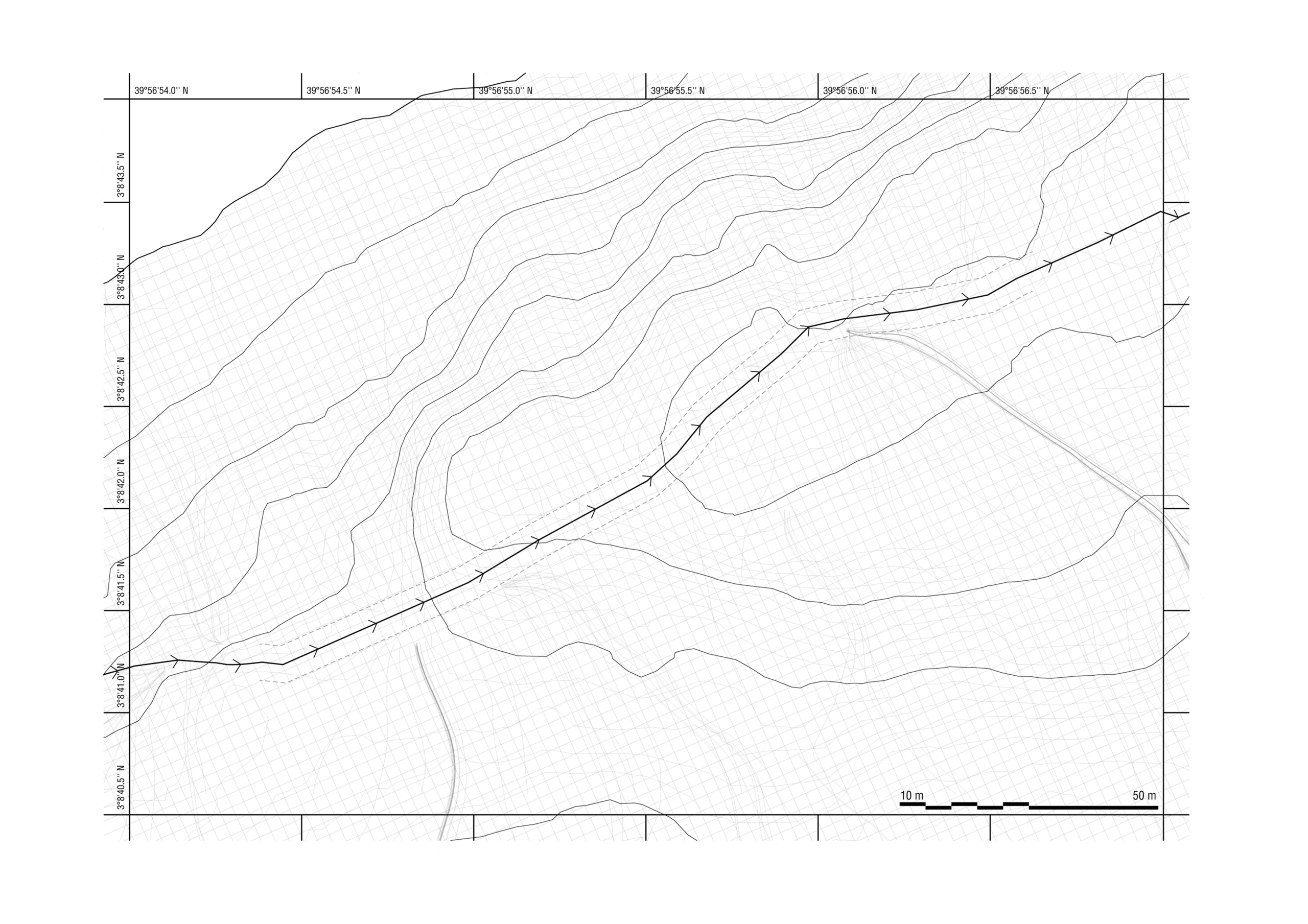
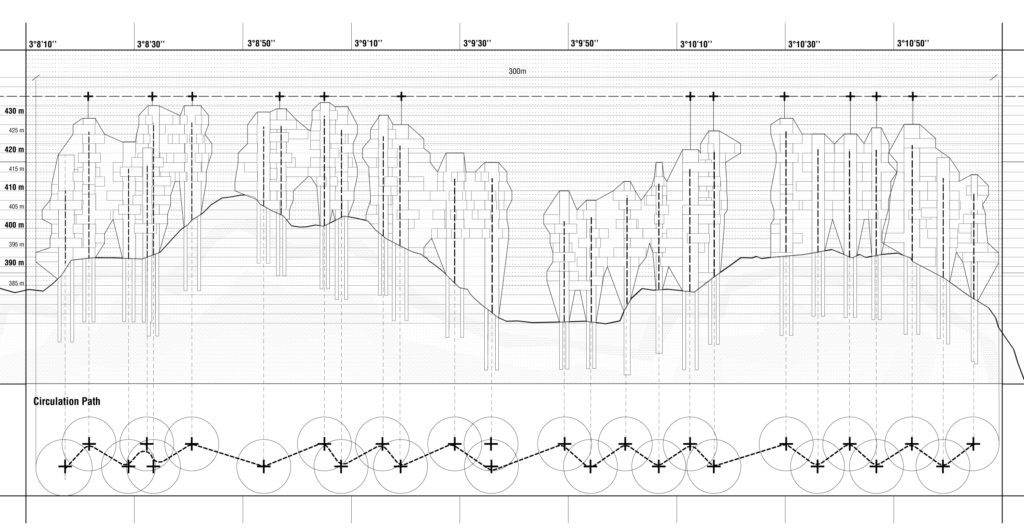
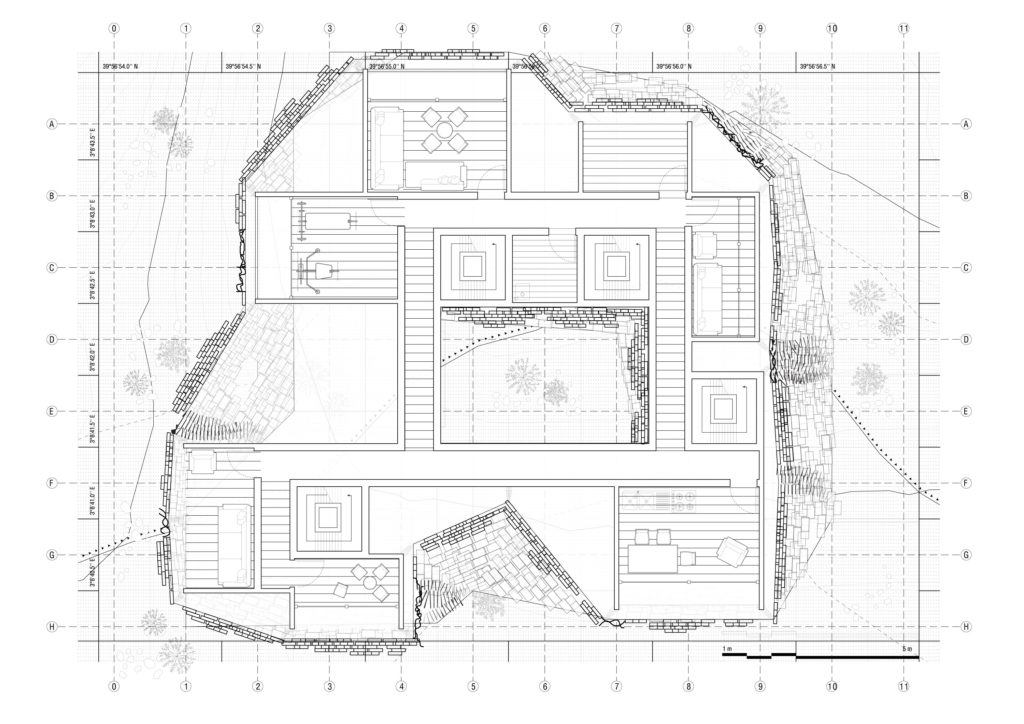
Each cluster is home of different targeted group of people: indeed there are 4 different type of modules so that in each are distributed from 2 to 6 people, depending on the total area. The main circulation for the private housing is vertical from the main core. Horizontal bridges connects every core in at two different height: here there are public and shared space. As for the smallest architecture presented before, the facade system works by following the same logic.
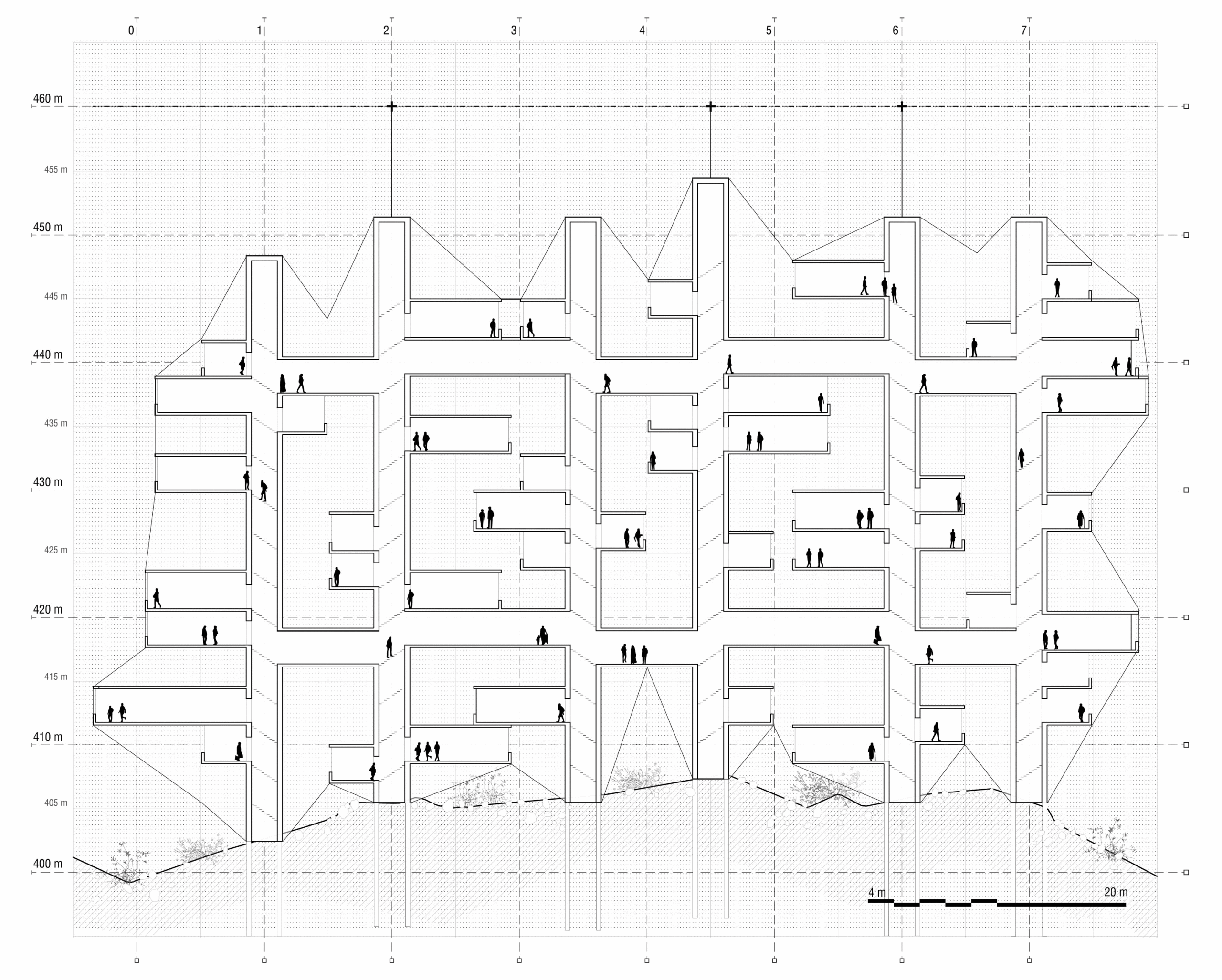
ACTIVITY MAP
Is here mapped the density of lightning strikes in an observation period of one year, varing during the hour of the day. The importance of the lighting event shapes the activities diagram: linear lines correspond to break moments, instead the more high is the density of the curve, and the more active would the life of the inhabitants be.
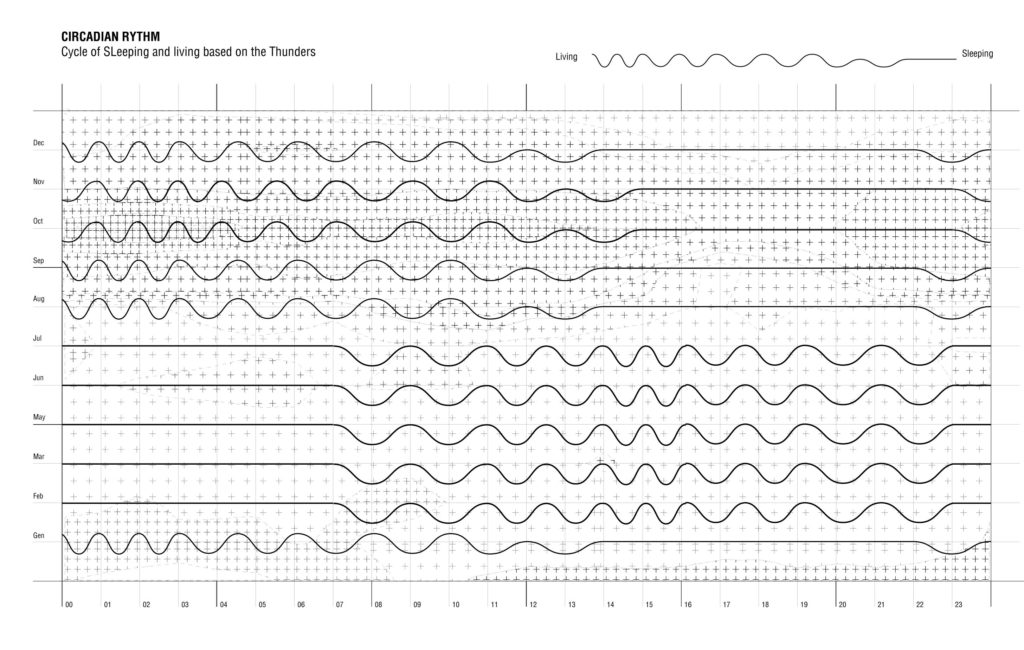
VISUALIZATION

1:5 MODEL PICTURES


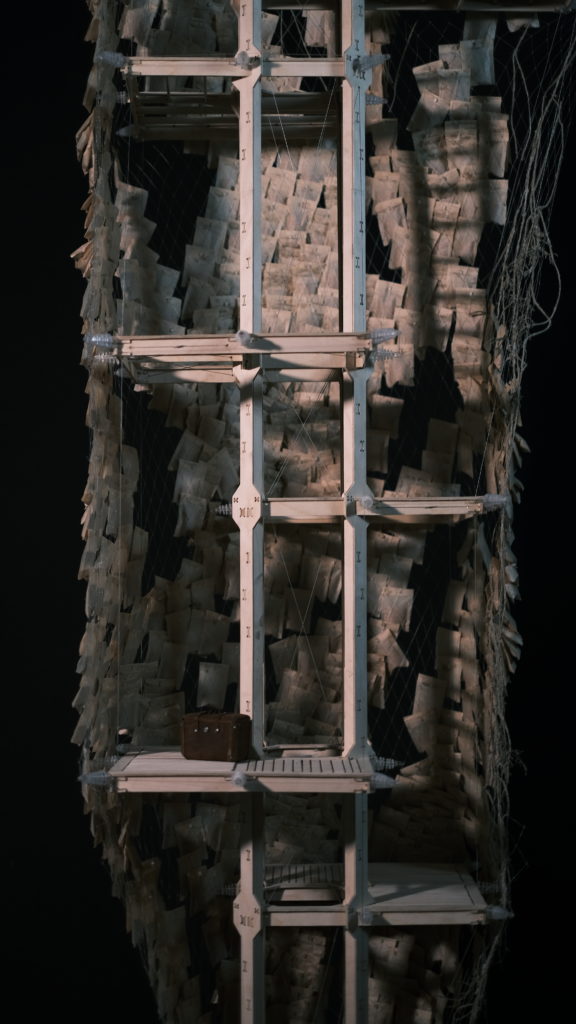
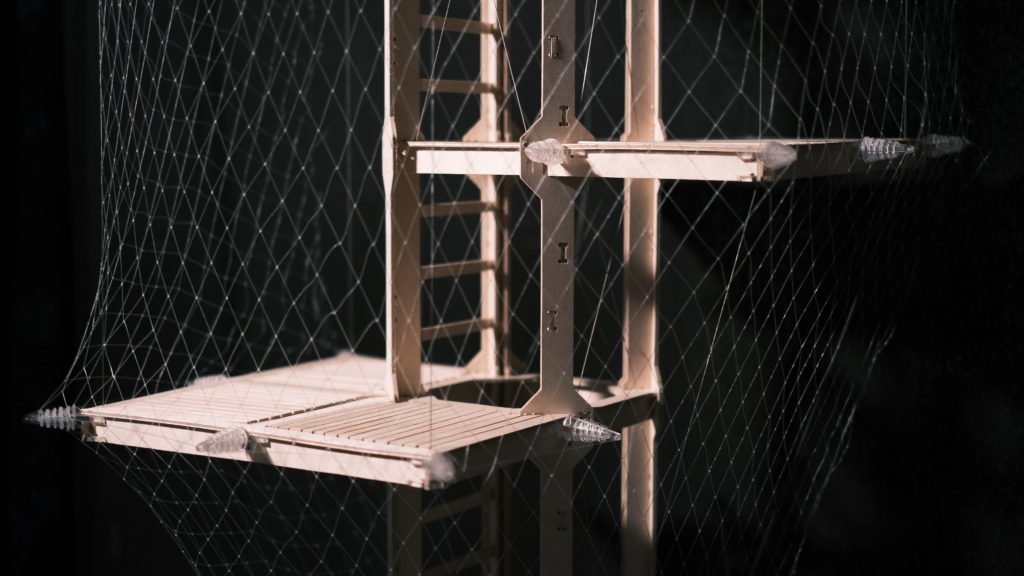
VIDEO

